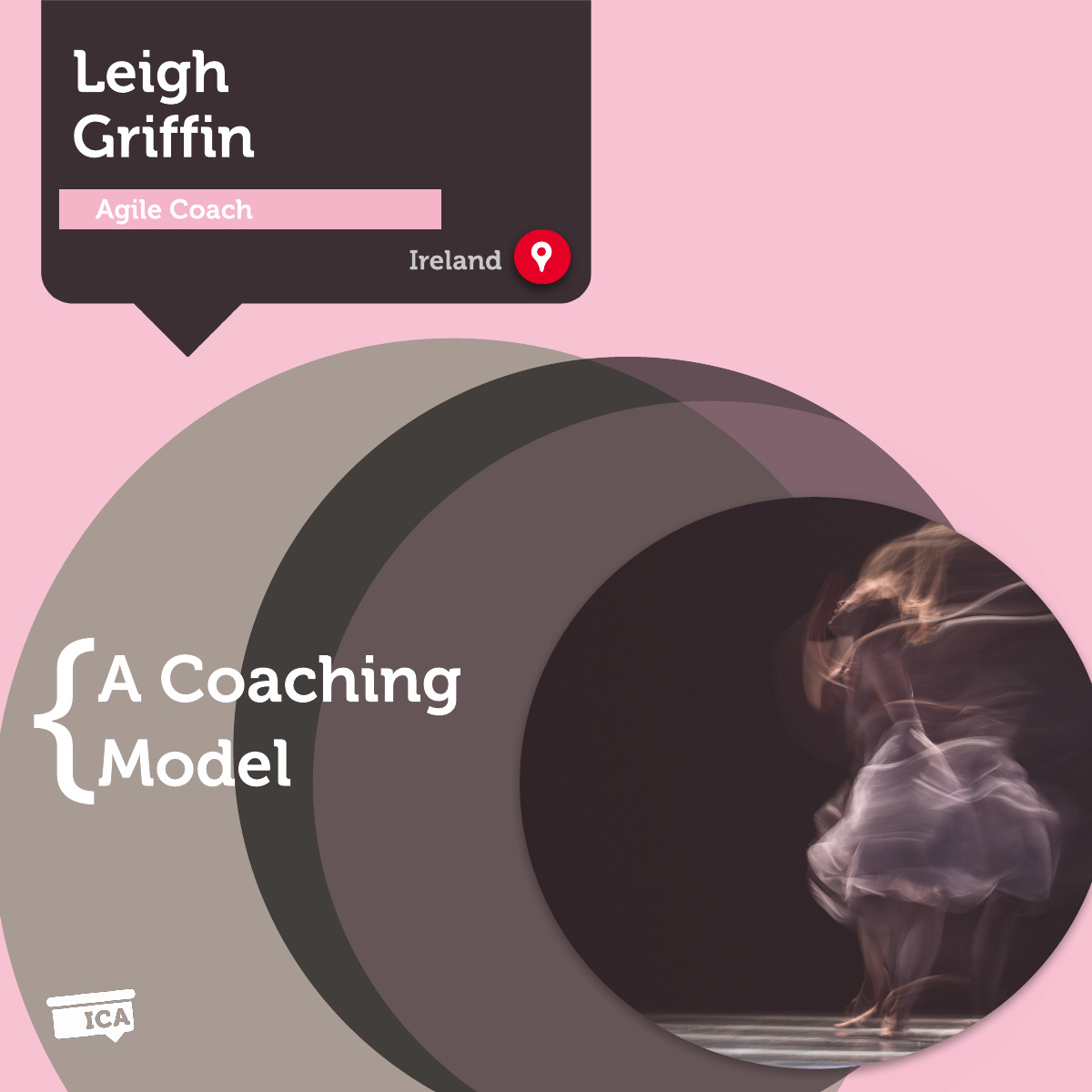A Coaching Model By Leigh Griffin, Management and Agile Coach, IRELAND
Role as a Coach for Continuous Improvement
In my role as a coach for continuous improvement, particularly around methodological approaches such as Agile and Lean, the goal is to help teams and individuals transition from a current state to an agreed future state. My day job is that of a people manager and within the world of people management, the goal of coaching Associates is to help them on a journey of continuous improvement and towards the next stage of behavior or competency. Both coaching approaches are long-term engagements and while the coaching session itself is focused around a topic of the client’s choice, the outcome of that session contributes to the overall journey of continuous improvement. The model I am proposing, the Continuous Improvement Coaching (CIC) Model draws from the concepts my clients are most familiar with.
A client works with a coach to identify a current state and explores a potential future state that they wish to move towards. Collaboratively, the gap is identified between the states and this forms a Backlog. While the future state may be very well defined for some clients, for most, this will take several sessions to explore and eventually establish the future state. The future state should be testable and discoverable when the client arrives there, so identifying acceptance criteria to validate the journey is an important collaboration between the client and coach. The backlog is an ordered prioritized topic list, that organically grows and contracts as time moves on. The backlog charts the journey towards the future state and once exhausted, indicates that the destination state has been attained. A final session to validate the future state and retrospectively look back on the journey signals the end of the coaching relationship for this particular journey.
In the first session, the Backlog is formed and prioritized and the client chooses the highest priority topic, that is the topic that gives the most value to them in the here and now. The problem moves into a coaching conversation centered around the client achieving the goal of the coaching agreement that formed around the problem topic. Influenced by a key power tool that people managers utilize in their coaching, the coach works with the client to help examine skills and passions that might be applied to the coaching topic. In particular, the gap is explored to see if there is a potential course of action that can help the client achieve the goals of this session. Getting to a point of commitment is the goal of the coaching session, for the client to commit to a course of action that will hopefully solve the original problem and achieve the goals of the coaching agreement. The model may continue in a cycle of skills-passion examination until this point is reached. When commitment is attained, a timebox between sessions is agreed for implementing/practicing/exploring the committed action.
Upon the next session, a quick review is held between the client and the coach to briefly explore if the committed action was completed and to gain an insight into the improvement journey the client embarked on. If it was agreed upon with the client, this could be an accountability-driven check. After the review, the current state and proposed future state are reviewed to see if the learnings and journey between sessions have uncovered new challenges and issues and to verify that the current set of problems within the Backlog is still valid and prioritized accordingly. This can allow for calibration on the future state as we learn by doing and experiencing. The client then selects the next most valuable topic to progress into the coaching agreement for the current session.
This model allows for journeys of mutual understanding, incremental improvement, and for allowing the client to select the most appropriate topic that will help them in the here and now while being cognisant of the overall journey and goals.
Learn How to Create Your Own Coaching Model
Your Coaching Model reflects your values,
philosophies and beliefs and must communicate who you will coach
and the problems you will solve. Read more about creating your coaching model
